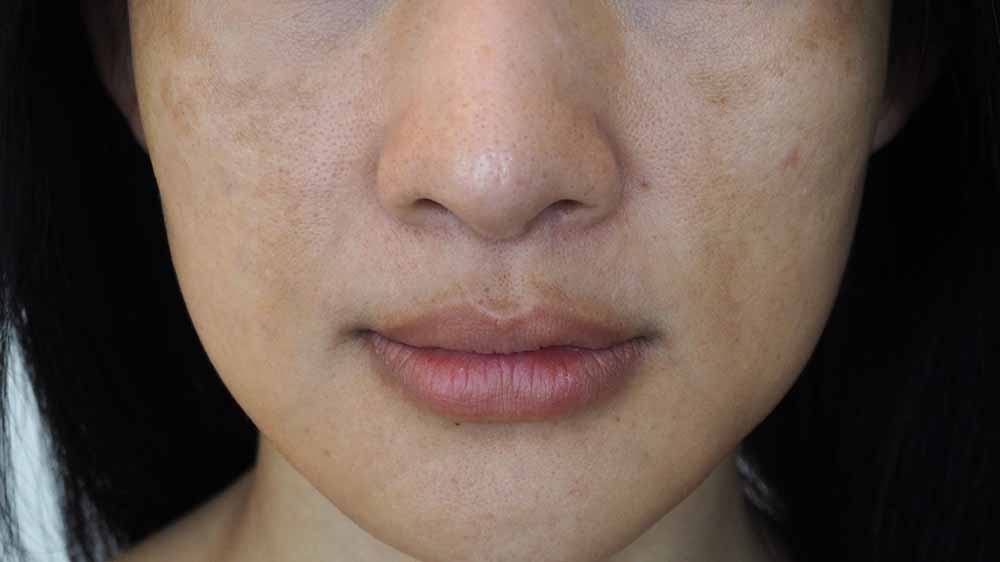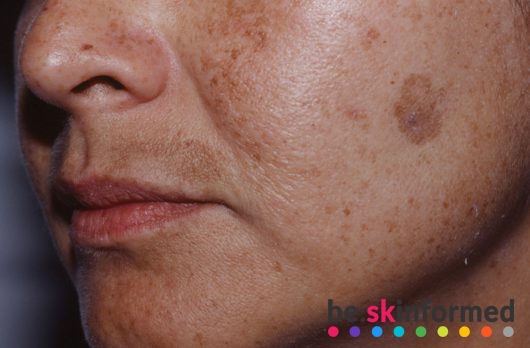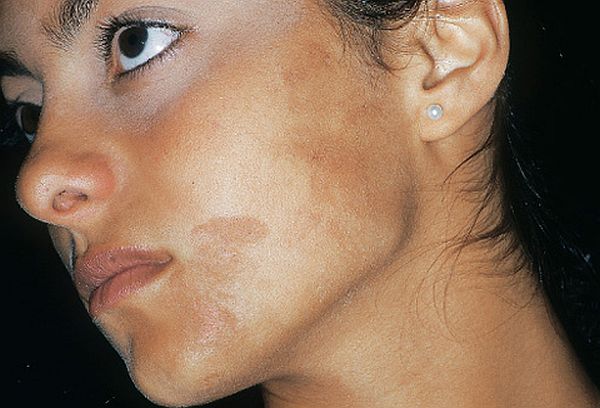Dark Spots vs Sun Spots
Your skin is the first line of defence against injury, water loss, and extreme temperatures. Covering about 20 square feet, it is the largest organ of the body and as such, it is exposed to environmental damage.
The skin contains melanin, the natural pigment that determines your skin colour. Melanin is also responsible for protecting your skin against UV damage. Factors such as skin injury, hormonal imbalance and prolonged exposure to sunlight may lead to melanin concentration into small areas which form hyperpigmented spots.
Among these are dark spots and sunspots. So, what’s the difference between the two and just how similar are they? To help you understand these common forms of skin discolourations here’s more on dark spot vs sunspots.

Whats the Similarity Between Dark Spots and Sun Spots?
Both dark spots and sunspots are caused by overproduction of melanin in the skin. Excess melanin production is the skin’s mechanisms for dealing with undesirable factors. These blemishes can be unsightly and if left untreated, they can increase in size and cover large areas of the skin.
The Difference Between Dark Spots and Sun Spots
The most distinguishing factor between these spots is the root cause. For better clarity let’s discuss each independently;
Dark Spots

Dark spot is a term used to describe different types of skin discolourations. These spots can be caused by a wide range of factors and may manifest as:
Acne Spots
Acne, also known as acne vulgaris, is a skin condition prevalent among teens and some adults. It affects areas of the skin with a high number of sebaceous glands such as the face, upper chest, and the back.
Acne results from clogged hair follicles. This happens when dead skin cells and sebum concentrate in the skin pores to form a plug. If the plug is covered by skin, it appears as a small white bump on the skin’s surface and is known as a whitehead.
While sunspots are dark spots, not all dark spots are sunspots.
If the skin gets inflamed and ruptures, bacteria and the plug’s content mix and react with air, oxidation occurs to form blackheads. Meanwhile, the inflamed skin triggers excess melanin production on the site which causes post-inflammatory hyperpigmentation or simply acne spots. Acne spots outlive acne infection and become worse with UV exposure.
Birthmarks
These are skin discolouration present at or soon after birth. They are of distinct and darker colour from the surrounding skin and can also manifest as raised benign bumps. They range in size from small circular spots to large patches. Birthmarks can be found in any part of the skin, from the scalp to the sole of your feet.
These spots can maintain their size or grow larger with age. They can also come in different colours depending on your skin colour. Typically, birthmarks are either black, brown, purple, or pink, with black being most common especially in dark-skinned people.
Melasma

Melasma is a type of skin discolouration that is blotchy in appearance. It’s common among women, especially during pregnancy. Depending on your skin colour, the patches can be black, or variants of grey. The condition is caused by hormone-induced overproduction of melanin.
Melasma is more prevalent among African, Hispanic and Asian women of reproductive age. Although it is hormonal, the condition is aggravated by chronic exposure to sunlight. Some forms of melasma can clear on their own while others are stubborn and require treatment.
Age Spots/Sunspots
As the name suggests, age spots are hyperpigmentations common in the older population. They are also known as sunspots or solar lentigines. They form from repeated sun exposure for many years, hence their association with middle-aged or older people.
These spots are more noticeable on areas of the skin that are usually exposed to the sun. They manifest as dark spots of various sizes on the face, hands and shoulders. Another popular name for age spots is liver spots, an erroneous name from earlier association with liver disease.
These spots appear more like freckles but there is a difference; freckles are usually inherited although they can be aggravated by sunlight exposure, and are smaller in size.
Age spots may range from tan and brown to black in colour. The condition is common in light-skinned people but it can affect other skin types as well.
So, what’s the difference between the two?
Dark spots include all forms of hyperpigmentation, including sunspots while sunspots are discolourations caused by many years of exposure to sunlight and are prevalent from middle age onwards.
How to Deal with Dark Spots and Sun Spots
The biggest enemy when it comes to any form of hyperpigmentation is sunlight. Besides sunlight, there are other factors that contribute to hyperpigmentation. With this in mind and since the sun is not going anywhere, the following tips can help you maintain an even skin tone and/or get rid of dark spots.
- Avoid direct sunlight– You can do this by using an umbrella, wearing long-sleeved clothes and wide hats.
- Wear sunscreen– Apply sunscreen with SPF 30 or above to keep UVB and UVA rays from your skin.
- Avoid injuries to your skin– You can do this by resisting the urge to pop pimples or scratch on your skin to avoid post-inflammatory hyperpigmentation.
- Treat using skin lightening products or procedures– If despite your efforts you still end up with hyperpigmentation, maybe it is time to consider treatment. These can be in the form of natural skin lightening creams or creams containing hydroquinone, procedures like laser skin surgery, dermabrasion or microneedling.
Conclusion
Sunspots and other dark spots are skin discolourations that are a source concern for most people. While sunspots are dark spots, not all dark spots are sunspots. Both can, however, be kept at bay by avoiding UV exposure and consequently, can be aggravated by UV exposure. That said, there are numerous treatments that can effectively get rid of them or gradually fade them depending on their severity.


